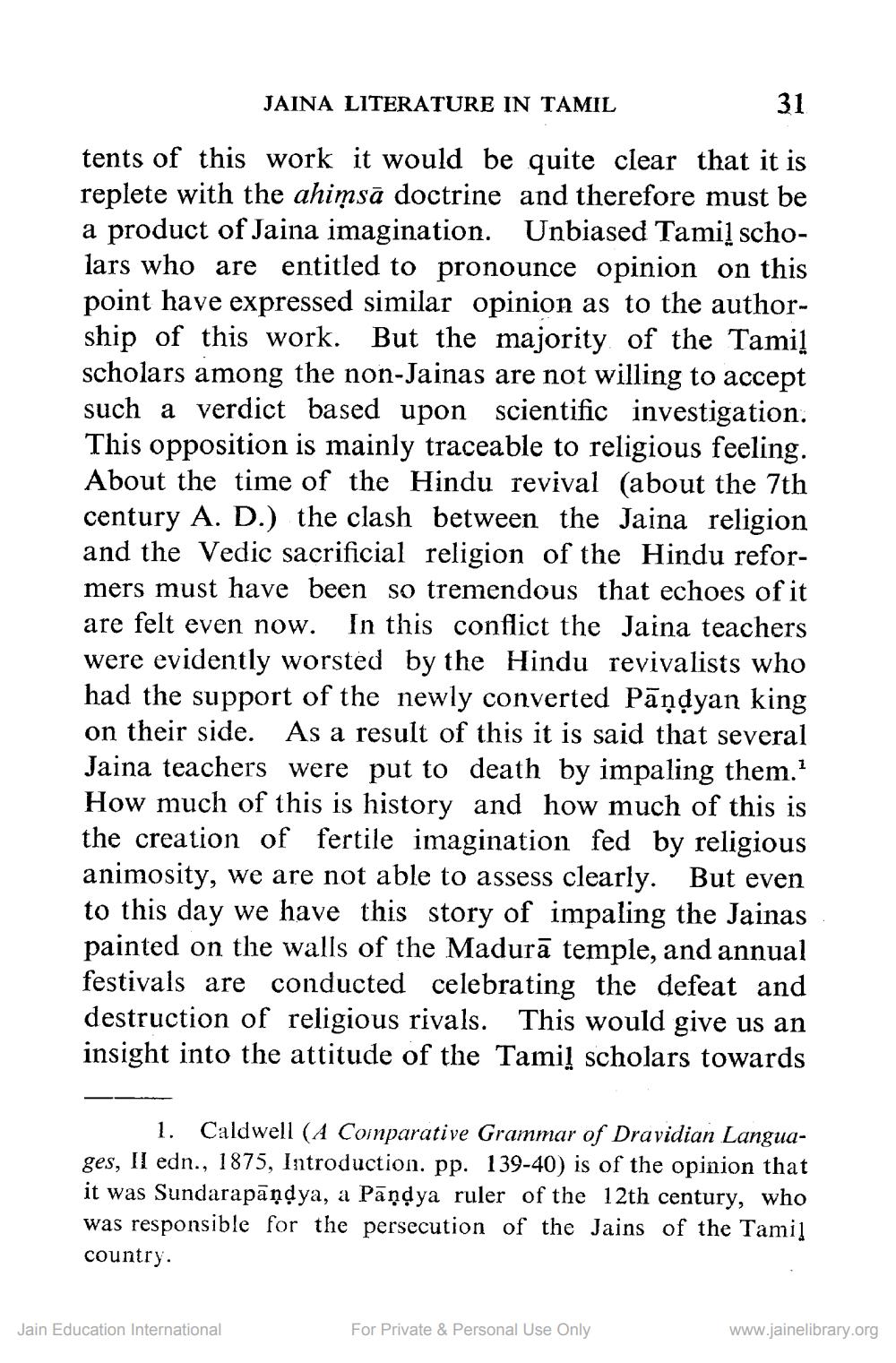________________
JAINA LITERATURE IN TAMIL
1
tents of this work it would be quite clear that it is replete with the ahimsā doctrine and therefore must be a product of Jaina imagination. Unbiased Tamil scholars who are entitled to pronounce opinion on this point have expressed similar opinion as to the authorship of this work. But the majority of the Tamil scholars among the non-Jainas are not willing to accept such a verdict based upon scientific investigation This opposition is mainly traceable to religious feeling. About the time of the Hindu revival (about the 7th century A. D.) the clash between the Jaina religion and the Vedic sacrificial religion of the Hindu reformers must have been so tremendous that echoes of it are felt even now. In this conflict the Jaina teachers were evidently worsted by the Hindu revivalists who had the support of the newly converted Pāņdyan king on their side. As a result of this it is said that several Jaina teachers were put to death by impaling them.' How much of this is history and how much of this is the creation of fertile imagination fed by religious animosity, we are not able to assess clearly. But even to this day we have this story of impaling the Jainas painted on the walls of the Madurā temple, and annual festivals are conducted celebrating the defeat and destruction of religious rivals. This would give us an insight into the attitude of the Tamil scholars towards
1. Caldwell (A Comparative Grammar of Dravidian Languages, II edn., 1875, Introduction. pp. 139-40) is of the opinion that it was Sundarapāņdya, a Pāņdya ruler of the 12th century, who was responsible for the persecution of the Jains of the Tamil country.
Jain Education International
For Private & Personal Use Only
www.jainelibrary.org




